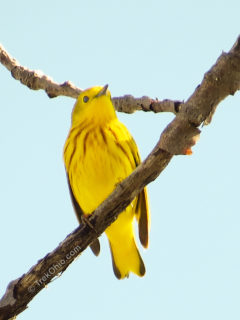 The Biggest Week in American Birding is an annual event held in northwestern Ohio. This year it is being held from May 6 to May 15, 2016. Every spring many species of small birds in the warbler family migrate from South America to Canada. In order to store up energy for the flight across Lake Erie, the birds spend some time on the southwestern shore of Lake Erie fattening up on insects. While the birds look for insects, the people look for the birds. We've participated in two previous Biggest Weeks Read more ➜
The Biggest Week in American Birding is an annual event held in northwestern Ohio. This year it is being held from May 6 to May 15, 2016. Every spring many species of small birds in the warbler family migrate from South America to Canada. In order to store up energy for the flight across Lake Erie, the birds spend some time on the southwestern shore of Lake Erie fattening up on insects. While the birds look for insects, the people look for the birds. We've participated in two previous Biggest Weeks Read more ➜ Biggest Week in American Birding 2016
 The Biggest Week in American Birding is an annual event held in northwestern Ohio. This year it is being held from May 6 to May 15, 2016. Every spring many species of small birds in the warbler family migrate from South America to Canada. In order to store up energy for the flight across Lake Erie, the birds spend some time on the southwestern shore of Lake Erie fattening up on insects. While the birds look for insects, the people look for the birds. We've participated in two previous Biggest Weeks Read more ➜
The Biggest Week in American Birding is an annual event held in northwestern Ohio. This year it is being held from May 6 to May 15, 2016. Every spring many species of small birds in the warbler family migrate from South America to Canada. In order to store up energy for the flight across Lake Erie, the birds spend some time on the southwestern shore of Lake Erie fattening up on insects. While the birds look for insects, the people look for the birds. We've participated in two previous Biggest Weeks Read more ➜ 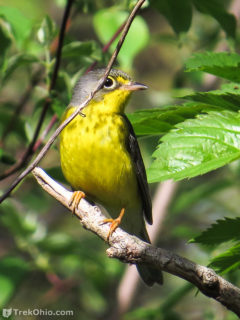 Last week we went to Magee Marsh to check out the action at the Biggest Week in American Birding. This was the second time we made an appearance (the first time is described here). This event is set up to celebrate and observe the migration of warblers in their colorful breeding plumage. Many species are on their way north, but their trip is delayed by Lake Erie. Before these small birds attempt to fly over the lake, they stop on Lake Erie's southern shore to fatten up on bugs, so they'll have the
Last week we went to Magee Marsh to check out the action at the Biggest Week in American Birding. This was the second time we made an appearance (the first time is described here). This event is set up to celebrate and observe the migration of warblers in their colorful breeding plumage. Many species are on their way north, but their trip is delayed by Lake Erie. Before these small birds attempt to fly over the lake, they stop on Lake Erie's southern shore to fatten up on bugs, so they'll have the 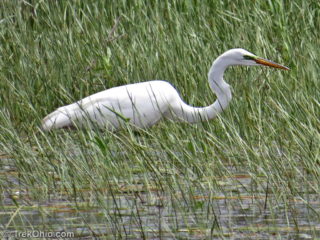 The Ottawa National Wildlife Refugee is located next to Lake Erie between Magee Marsh and Metzger Marsh. It is a great place to go birding because it is another stop-over during the spring / fall bird migration, particularly for water birds in the spring. It's also a nesting / hunting area for local eagles.
Entrance to the refuge is off of State Route 2 in Ottawa County. The visitors center features a small exhibit area, conference rooms, maps of the refuge, restrooms, and a telescope
The Ottawa National Wildlife Refugee is located next to Lake Erie between Magee Marsh and Metzger Marsh. It is a great place to go birding because it is another stop-over during the spring / fall bird migration, particularly for water birds in the spring. It's also a nesting / hunting area for local eagles.
Entrance to the refuge is off of State Route 2 in Ottawa County. The visitors center features a small exhibit area, conference rooms, maps of the refuge, restrooms, and a telescope 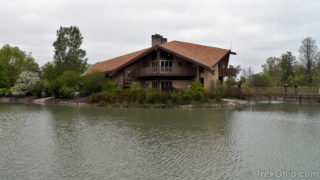 Bob and I have hiked many trails in the nature preserves and parks of Ohio. However the state of Ohio also has designated "State Wildlife Areas" that are under the management of the Ohio Department of Natural Resources. These are important areas for hunting and fishing in Ohio, but they aren't usually geared toward hiking and most of them lack trails. However some of these State Wildlife Areas do have trails, especially those that are good sites for birding.
In our last post I discussed a visit
Bob and I have hiked many trails in the nature preserves and parks of Ohio. However the state of Ohio also has designated "State Wildlife Areas" that are under the management of the Ohio Department of Natural Resources. These are important areas for hunting and fishing in Ohio, but they aren't usually geared toward hiking and most of them lack trails. However some of these State Wildlife Areas do have trails, especially those that are good sites for birding.
In our last post I discussed a visit 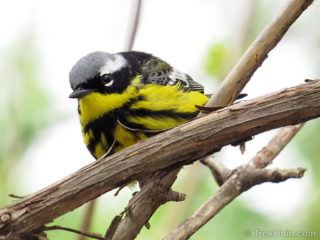 I am an aspiring birder; actually, I seem to be perpetually stuck at the "beginning birder" level. I enjoy and recognize the birds that frequent my backyard feeding station. And when hiking, I enjoy listening to birdsong and calls... but I rarely catch sight of those singing birds. Most of the time they seem to be perched high above me and hidden by the tree's foliage. However in Ohio there is an annual birding event called, The Biggest Week in American Birding, and this year I decided to give it
I am an aspiring birder; actually, I seem to be perpetually stuck at the "beginning birder" level. I enjoy and recognize the birds that frequent my backyard feeding station. And when hiking, I enjoy listening to birdsong and calls... but I rarely catch sight of those singing birds. Most of the time they seem to be perched high above me and hidden by the tree's foliage. However in Ohio there is an annual birding event called, The Biggest Week in American Birding, and this year I decided to give it 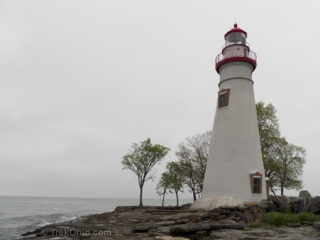 Marblehead Lighthouse State Park is a 9 acre state park containing the oldest lighthouse in continuous operation in the United States. The lighthouse is located on the Marblehead Peninsula on the shoreline of Lake Erie.
Lake Erie
Lake Erie is part of a chain of five giant fresh water lakes formed during the end of the last Ice Age. With a surface area of 9,910 square miles (25,700 km2), it is the world's eleventh largest lake in terms of surface area and twelfth in terms of volume.
Marblehead Lighthouse State Park is a 9 acre state park containing the oldest lighthouse in continuous operation in the United States. The lighthouse is located on the Marblehead Peninsula on the shoreline of Lake Erie.
Lake Erie
Lake Erie is part of a chain of five giant fresh water lakes formed during the end of the last Ice Age. With a surface area of 9,910 square miles (25,700 km2), it is the world's eleventh largest lake in terms of surface area and twelfth in terms of volume. 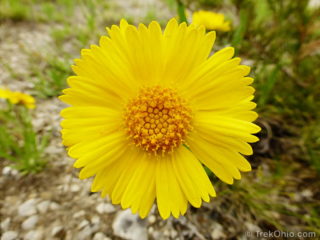 The Lakeside daisy is Ohio's rarest, native plant species. This plant only grows in four areas. Its largest population is in Ohio's Marblehead peninsula, part of Ottawa County. This is where the Lakeside Daisy State Nature Preserve is located. Lakeside daisies are also found in Michigan's upper peninsula, and in Ontario, Canada they can be found in the Bruce Peninsula and Manitoulin Island.
Lakeside daisies are the only representatives of their genus that live east of the Mississippi.
The Lakeside daisy is Ohio's rarest, native plant species. This plant only grows in four areas. Its largest population is in Ohio's Marblehead peninsula, part of Ottawa County. This is where the Lakeside Daisy State Nature Preserve is located. Lakeside daisies are also found in Michigan's upper peninsula, and in Ontario, Canada they can be found in the Bruce Peninsula and Manitoulin Island.
Lakeside daisies are the only representatives of their genus that live east of the Mississippi.